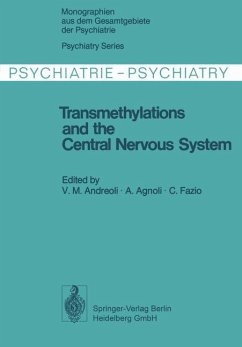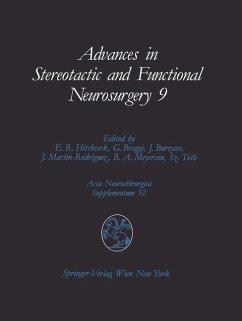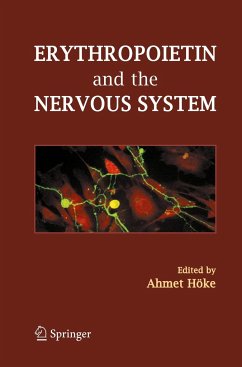
Transmethylations and the Central Nervous System

PAYBACK Punkte
20 °P sammeln!
V M. ANDREOLl, A. AGNOLI, and C. FAZIO The transfer of a methyl group from a donor to an acceptor compound is a fundamental biochemie al process long since known to biologists; the process is involved, for instance, in the metabolism of porphyrins, nuc1eic acids, and fatty acids. Only recently, however, did transmethylation processes reveal their decisive role in CNS biochemistry - namely with the discovery that such processes are linked with the biogenie amines that have been conc1usively identified as the chemical mediators of neu ronal transmission and, more broadly, of behavior. The first ...
V M. ANDREOLl, A. AGNOLI, and C. FAZIO The transfer of a methyl group from a donor to an acceptor compound is a fundamental biochemie al process long since known to biologists; the process is involved, for instance, in the metabolism of porphyrins, nuc1eic acids, and fatty acids. Only recently, however, did transmethylation processes reveal their decisive role in CNS biochemistry - namely with the discovery that such processes are linked with the biogenie amines that have been conc1usively identified as the chemical mediators of neu ronal transmission and, more broadly, of behavior. The first suggestion that transmethylation processes might be involved in the origina tion of certain mental diseases came from Harley-Mason (1952), who noticed that many of the hallucinogenic substances known at that time contained methyl radicals, and par ticularly that mescaline represented the product of O-methylation of dopamine in posi tions 3, 4, and 5. This hypothesis was put forward when the O-methylation of catechol amines by catechol-O-methyltransferases had not yet been described. Harley-Mason further proposed that in the living organism the process of O-methyla tion might follow a "deviant" metabolie pathway, and that the accumulation of abnor mal methylated metabolites endowed with hallucinogenic properties might be responsi ble for the implementation of some mental diseases, notably schizophrenia. He also called attention to a substance, 3,4-dimethoxyphenylethylamine (3,4-DMPEA) as a possible psychotogenic moleeule, on the strength of its capacity for producing cata tonia in experimental animals.














